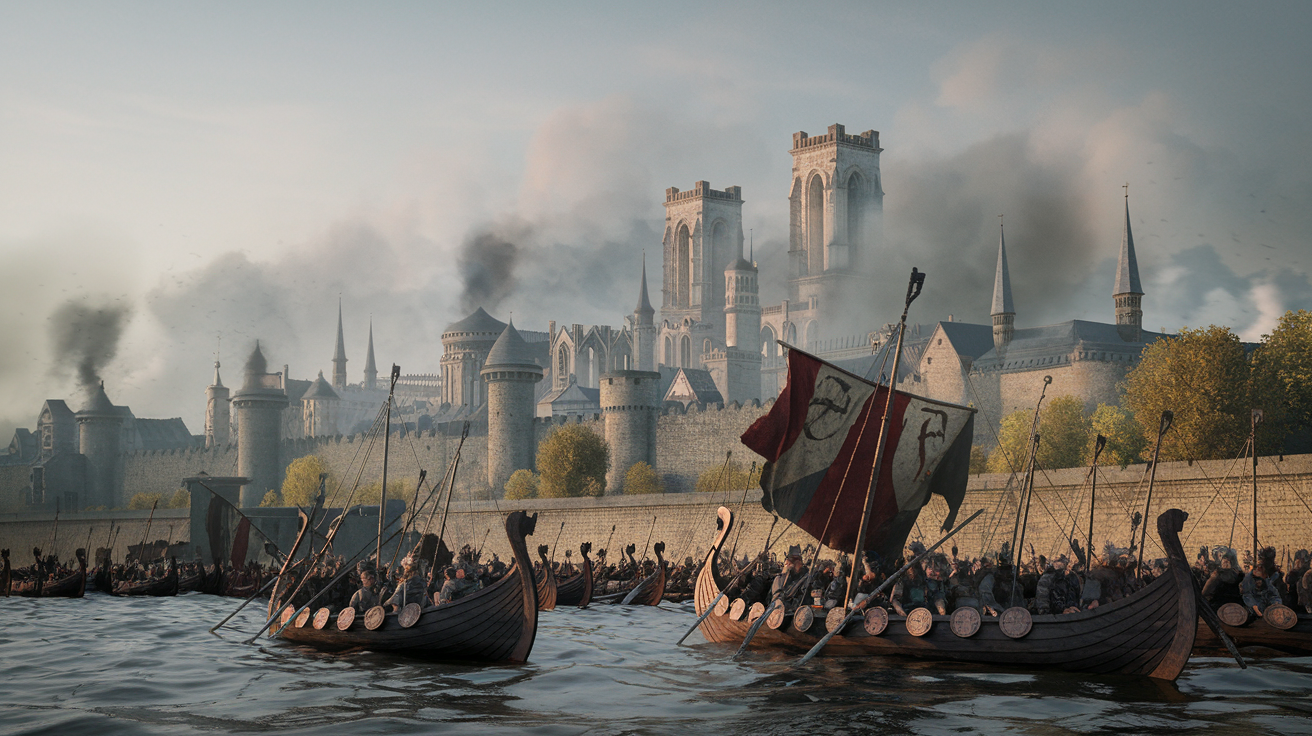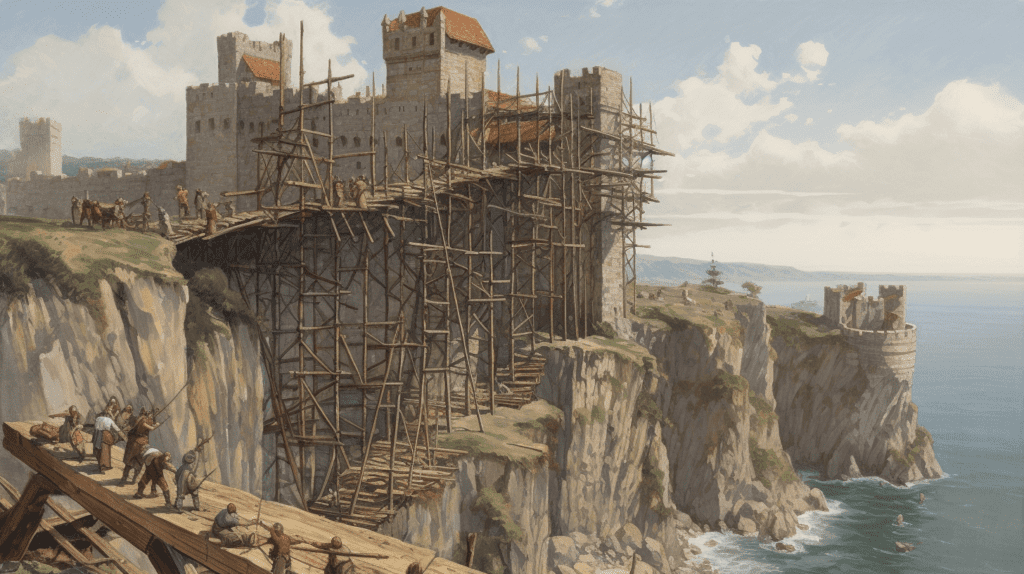
The Viking raids on France, particularly during the 9th century, were a series of dramatic and transformative events that left an indelible mark on the history of the region. These raids were not just about plundering and destruction; they were also about power struggles, cultural exchanges, and the eventual integration of the Vikings into European society.
The Prelude to the Raids
The Viking Age, roughly spanning from the late 8th century to the early 11th century, was marked by the expansion of Norse seafarers from Scandinavia. The reasons behind their expansion are multifaceted, including overpopulation, political instability, and the lure of wealth and new lands. The death of Charlemagne in 814 CE, who had been a formidable force against external threats, left a power vacuum in the Frankish Empire, and the city of Paris stood out as a particularly enticing prize.

The First Raid: 845 AD
The first significant Viking raid on Paris occurred in 845 AD, led by the legendary chieftain Ragnar Lothbrok. According to the chronicles, Ragnar sailed up the Seine River with a fleet of 120 ships, carrying thousands of fierce warriors. The sight of the longships must have been terrifying for the Parisians, who had never faced such a formidable force.
Ragnar’s strategy was both brutal and effective. He divided his forces, sending one group to attack the eastern bank of the Seine while the other assaulted the western bank. The defenders of Paris were quickly overwhelmed, and the city fell into Viking hands. The invaders plundered the city, taking vast amounts of treasure and capturing many prisoners.
King Charles the Bald, the ruler of West Francia, was forced to pay a hefty ransom of 7,000 pounds of silver to persuade Ragnar to leave. This payment, known as the Danegeld, set a precedent for future Viking raids, as the Norsemen realized that they could extract wealth from their targets without prolonged sieges.

The Siege of 885-886 AD
The most famous Viking siege of Paris took place between 885 and 886 AD. This time, the Viking force was even larger, comprising around 700 ships and possibly 30,000 warriors.
The leaders of this formidable host were Sigfred and Sinric, two prominent Viking chieftains. Paris, by this time, had fortified its defenses. The city was protected by strong walls and the strategic use of the Seine River, which divided the city into two parts. The Vikings, however, were undeterred. They laid siege to the city, hoping to repeat their earlier success.
The defenders of Paris, led by Count Odo, put up a fierce resistance. They used every available resource to repel the invaders, including boiling water, hot oil, and even molten lead. The Vikings attempted to breach the walls with battering rams and siege towers, but the Parisians held firm. As the siege dragged on, the Vikings faced increasing difficulties. Supplies ran low, and disease began to spread among their ranks. Despite these challenges, they continued their assault, determined to capture the city.

The Turning Point
The turning point in the siege came when Emperor Charles the Fat, the ruler of the Carolingian Empire, decided to intervene. He gathered an army and marched to the relief of Paris. However, instead of engaging the Vikings in battle, Charles opted for a diplomatic solution. He negotiated a truce with the Viking leaders, allowing them to withdraw in exchange for a substantial payment of silver and permission to raid Burgundy.
This decision was controversial and widely criticized. Many saw it as a sign of weakness, and it did little to deter future Viking raids. Nevertheless, it brought an end to the siege, and Paris remained in Frankish hands.
The Aftermath
The Viking raids on Paris had a profound impact on the city and the wider region. The repeated attacks highlighted the vulnerability of the Frankish kingdom and the need for stronger defenses. In response, the Franks began to build more fortified structures and improve their military capabilities.
The raids also had a lasting cultural impact. The tales of Viking bravery and brutality became part of the folklore of the region, inspiring both fear and admiration. The Norsemen, with their distinctive longships and fearsome reputation, left an indelible mark on the history of Paris.

The Treaty of Saint-Clair-sur-Epte (911 CE)
One of the most significant outcomes of the Viking raids was the Treaty of Saint-Clair-sur-Epte in 911 CE. After years of raiding and settling in the region, the Viking chieftain Rollo negotiated a treaty with the Frankish king Charles the Simple. Under the terms of the treaty, Rollo was granted land in what would become Normandy (the land of the Northmen) in exchange for his loyalty and protection against other Viking raiders.
Rollo’s acceptance of Christianity and his integration into Frankish society marked the beginning of the transformation of the Vikings from raiders to rulers. The establishment of Normandy as a powerful and semi-independent duchy had long-lasting implications for the history of France and Britain.

Cultural Exchange and Integration
The Viking presence in France was not solely destructive. Over time, the Vikings began to settle in the regions they had once raided, intermarrying with the local population and adopting many aspects of Frankish culture. This cultural exchange enriched both societies.
The Vikings brought with them their seafaring skills, craftsmanship, and a warrior ethos, while they adopted the Christian faith, the Frankish language, and administrative practices. The descendants of the Vikings, particularly the Normans, would go on to play a crucial role in European history. The Norman Conquest of England in 1066, led by William the Conqueror, a descendant of Rollo, was a direct outcome of the Viking integration into France. The Normans also participated in the Crusades and established powerful states in Sicily and the Mediterranean.





